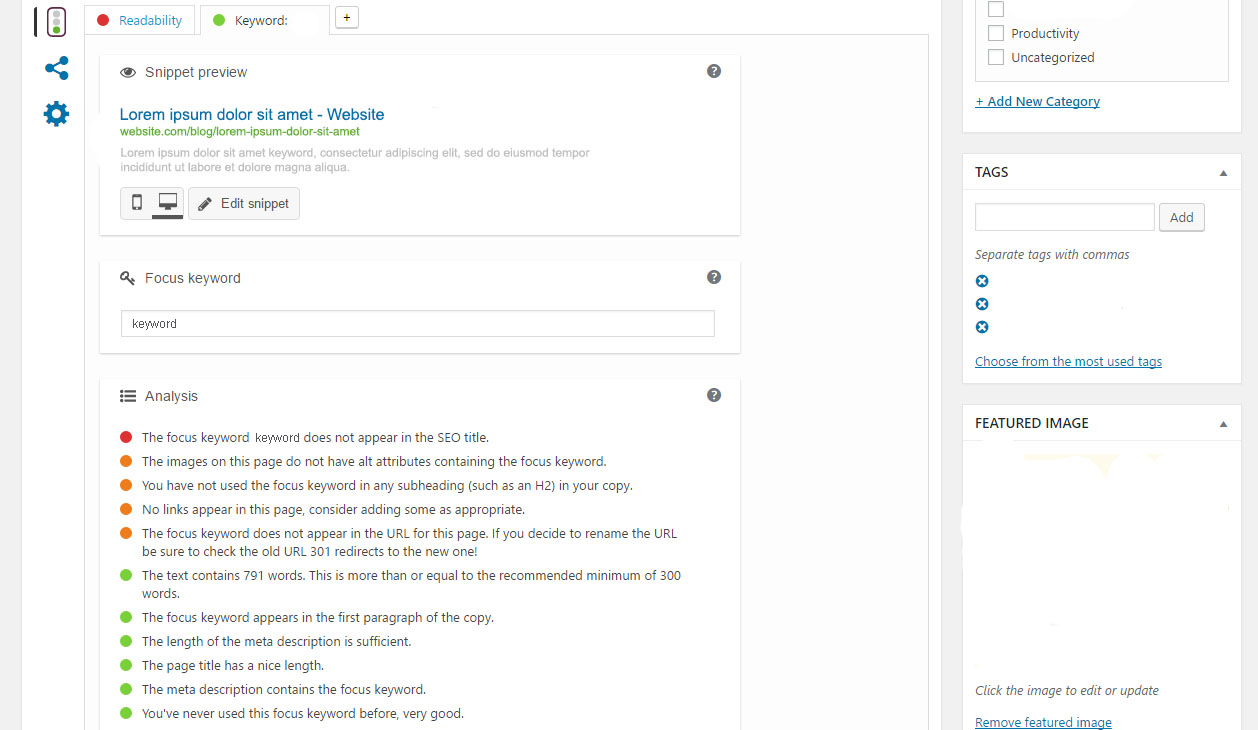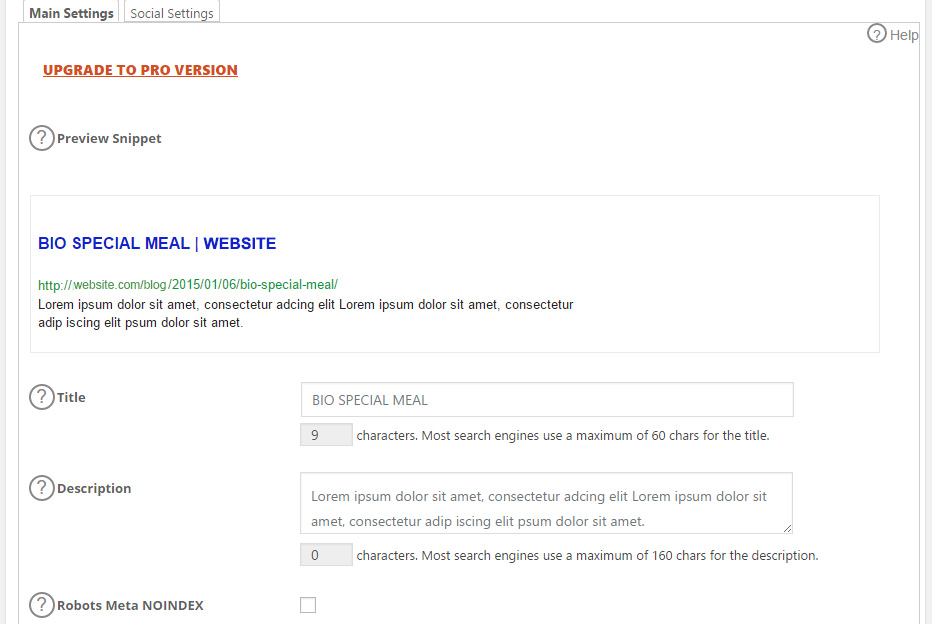SEO Battle: Yoast SEO vs All-In-One SEO Pack

While WordPress is very SEO friendly on its own, using an SEO plugin takes website optimization even further, giving you more options and capabilities. SEO plugins give you control over the appearance of your content in search engine results as well as on social networks. Also, they help you produce the best-optimized content that has a high probability to rank well. The two best SEO plugins out there are Yoast SEO and All-in-One SEO Pack, and here we will help you determine which one is the best for you.
Content optimization
Content optimization is the most important part of your SEO effort and the essential aspect of SEO plugins. Both of the plugins offer extensive features when it comes to this.
We use Yoast here at BestTechie along with millions of other sites like Tadeo & Silva Immigration Attorneys because of its easy-to-use nature and simple setup process. Yoast SEO implements a meta box of its own to the bottom of WP’s editor. It controls how your content appears in SERPs, allowing you to create the snippet with the link, title and meta description on your own. What’s best about Yoast SEO is its great content analysis feature. You input a keyword for it to focus on, and it analyses your content for the best SEO practices, letting you know which you should use via a scoring system.

All-in-One-SEO Pack enables you to edit the meta description and title as well and includes an option for disabling indexing, setting up canonical URLs and more. If you activate the Social Meta add-on, you get the options to attach your own images and descriptions for sharing on social media sites. However, what it lacks compared to Yoast SEO is a content analysis tool.

Both plugins make it easy for you to edit how your content appears in search engines easily. However, All-in-One SEO Pack lacks the content analysis tool, which gives Yoast SEO a great advantage.
Social media optimization
As SEO is no longer only about search engines, but also about social platforms where a large number of users discover content, optimization in this area is essential as well.
Yoast SEO has a section dedicated to optimizing for social networks. It enables you to implement up to eight different social networks in order to let Google know that they belong to your website. Next, to that, you can input Open Graph metadata for Twitter, Facebook, Google+ and Pinterest. This helps social media sites understand what your content is about and correctly recognize and display each piece of your content.
All-in-One SEO Pack has extensive features when it comes to social media optimization, but, in order for you to be able to fully use them, you have to activate Social Meta from the Feature Manager menu. By doing this, you get an extra menu where you can customize a large number of settings, even more than Yoast SEO. There is no limit to how many social profiles you can associate with your website. You can edit default image settings and set up Open Graph meta data for Facebook, Twitter and Google+.
Both plugins come with extensive support for sharing on social media websites and enable you to input information about your content that is important for social networks. Yoast SEO is more on the simple side in this area, while All-in-One SEO Pack enables you to have more control, but is a bit harder to use for beginners.
XML Sitemaps
Sitemaps are an essential tool for getting your content indexed properly. They provide a map of your website that tells search engines how to index it and give this information to search engines.
Yoast SEO has its own menu for XML sitemaps. They are a default option and are automatically created and updated whenever there is new content added, and it lets the search engines know this as well. You can look at your sitemaps from the settings menu and decide what post types you want to include, as well as configure how taxonomies are dealt with.
All-in-One SEO Pack doesn’t have XML sitemaps as a default feature, but you need to activate them from the Feature Manager. This automatically creates a sitemap and offers you an extra configuration menu. You can set up which search engines are going to be notified and how often, decide which parts of your content are going to be included, and set the frequency of indexing and crawling. It includes a feature that enables you to add pages to your sitemap that aren’t a part of your WP website.
Both plugins have an XML sitemap feature but they handle it differently. Yoast SEO has it as a default feature, while All-in-One SEO Pack offers you a lot more features and options.
Additional features
Next, to standard SEO features, each plugin includes additional tools to help you out.
Yoast SEO includes breadcrumb navigation, a built-in text editor for robots.txt and htaccess, a bulk editor, the option to import and export settings as well as to connect your site with the Google Search Console.
For Woocommerce websites, Yoast SEO has a specific addon with a variety of useful features. It’s slightly on the premium end, but can really enable webmasters to leverage the power of structured data through schema markup. For those that are not familiar with structured data and its applications, then here is a practical example of how it might be used.
The screen shot above shows how BritishLasers.com has utilized structured data to enhance their laser machine entry on the SERPs and how that looks like against other competitors. As we can see, the rating of the product is displayed, alongside the number of product reviews, the price and availability. Presenting this information will give any website a clear advantage where click through rate matters (and conversion rates to a lesser extent).
All-in-One SEO Pack comes with a Robots.txt editor that lets you edit the file from the backend, a file editor similar to Yoast SEO, the option to import and export your settings, a bad bot blocker that stops low quality search spiders from slowing down your website, and a performance manager that provides you with information about how your site is performing and allows you to change its memory limit.
Both plugins have a similar list of additional features. While All-in-One SEO Pack doesn’t have breadcrumbs and the connection to Google Search Console, it comes with some very useful extra features and allows you to switch features on and off according to your liking.
Conclusion
Both plugins come with their own set of advantages and disadvantages. In the end, it is up to you to decide which one you are going to use. Take the differences into account and decide which plugin best fits your purposes. And with that being said, if it makes your decision any easier, we here at BestTechie use Yoast. Additionally, Toby Balsiger of Website Tigers recommends Yoast as well due to its ability to enable noindexing on categories and tag pages.